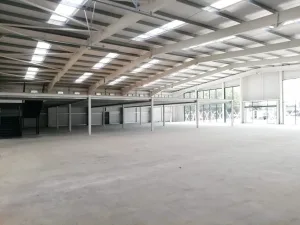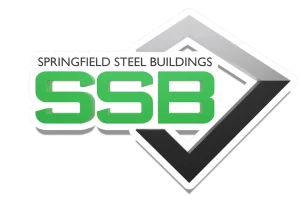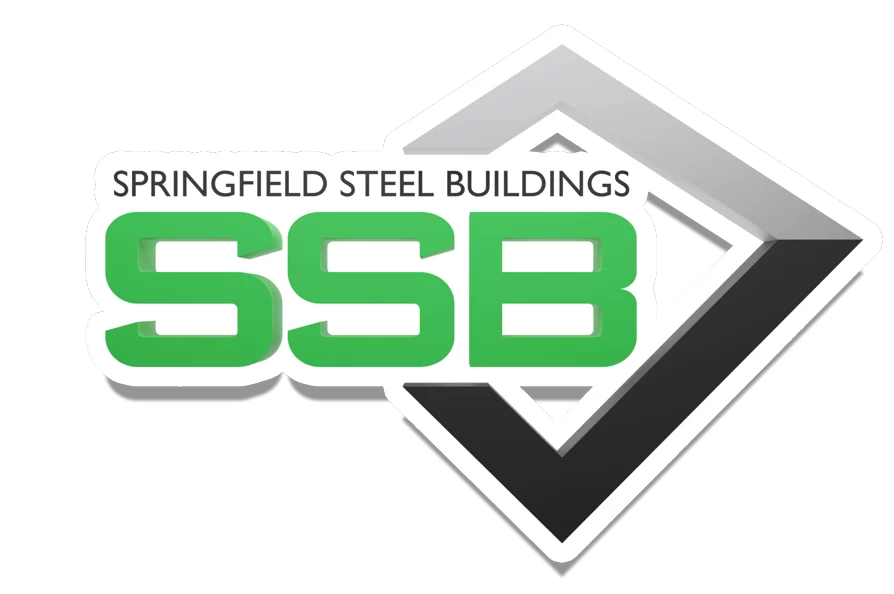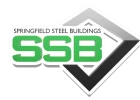Building Regulations
Building regulations are a set of standards and rules that ensure the safety, health, and welfare of people in and around buildings. These regulations are mandatory and apply to most types of buildings and structures, including steel buildings like those constructed by Springfield Steel Buildings. Compliance with building regulations is essential to prevent accidents, reduce risks, and promote sustainability.
The regulations cover various aspects of building design and construction, such as structure, fire safety, ventilation, drainage, and insulation. There are different types of regulations, including national regulations and local regulations, depending on the location of the building. Building regulations are constantly updated to keep up with changes in technology and building practices, and it is crucial to stay informed about the latest regulations to ensure compliance.
Building regulations drawings are an essential part of the building control process. These drawings provide a detailed plan of the building’s layout, structure, and other important features. They help building control officers assess compliance with regulations and identify any potential issues before construction begins. Building regulations drawings must be accurate, clear, and comprehensive, and they must include all relevant information, such as dimensions, materials, and specifications.
Failure to comply with building regulations can result in serious consequences, such as legal action, fines, or even imprisonment. It is therefore vital to understand the regulations and ensure compliance throughout the building process. Working with a reputable and experienced supplier like Springfield Steel Buildings can help ensure that your building meets all necessary standards. We have extensive experience in designing and constructing steel buildings that comply with all relevant regulations, and we can provide guidance and support throughout the building control process.
Getting Building Regulations Approval
Getting approval for building control in the UK is a necessary and regulated process. The application process can be daunting, but it is essential to obtain approval to ensure the safety of occupants and the longevity of the building. Building regulations drawings are an important part of the process, as they help demonstrate compliance with regulations and show the proposed construction in detail.
To apply for building control approval, there are several types of applications to choose from, depending on the project’s nature and complexity. Here are the different types of applications:
- Full Plans Application: This application involves submitting detailed plans and specifications of the proposed building work, including structural calculations, to the local authority for approval before any work begins. This type of application is suitable for larger or more complex projects and provides the most comprehensive approval.
- Building Notice Application: This application involves giving notice to the local authority of the proposed building work two days before it begins. Unlike a full plans application, there is no need to provide detailed plans and specifications in advance. This type of application is more suitable for smaller, simpler projects with minimal structural alterations.
- Regularisation Application: This application is used to seek approval retrospectively for building work that was carried out without the required building regulations approval. This application may require more extensive documentation, including retrospective plans and specifications, to demonstrate compliance with the regulations.
It is important to note that each application type has its advantages and disadvantages. However, it is essential to ensure that the application is complete, with all necessary documentation included, to avoid delays and additional charges. Choosing the appropriate application type can help ensure a smooth and successful application process, ultimately resulting in approval for the building work.
The application must also include detailed plans and specifications that demonstrate how the building will meet the required regulations. Building regulations drawings should show the proposed construction in detail, including materials, dimensions, and any necessary calculations. The drawings should be clear, accurate, and easy to understand. At Springfield Steel Buildings, we can help any client through the application process, or provide advice on hand.
Once the application is submitted, a building control officer will review the plans and specifications to ensure they meet the necessary regulations. They may ask for additional information or changes to the plans, so it is important to be available for communication and quick to respond. Building control fees and charges are also part of the process, and it is essential to budget for these costs.
Building Control Inspections
When it comes to building control, inspections are a crucial part of ensuring that the construction work complies with the regulations. During the construction process, building control inspectors will visit the site at various stages to check that the work is being carried out in accordance with the approved plans and building regulations. Inspections are usually carried out at key stages, such as before any concrete is poured or before insulation is installed.
It is important to note that the responsibility for ensuring compliance with the building regulations ultimately rests with the building owner or developer. Failure to comply with the regulations can result in serious consequences, including fines, enforcement notices, and even legal action. Therefore, it is essential to work closely with your building control inspector and ensure that any issues are addressed promptly to avoid any delays or additional costs.
During inspections, the building control inspector will check that the work being carried out is of an acceptable standard and that it meets the relevant building regulations. This may include checking that the correct materials and methods are being used, that the construction work is being carried out safely, and that the work is progressing according to the approved plans. Inspectors may also ask for evidence, such as test certificates or calculations, to demonstrate that the work meets the required standards.
It is worth noting that building control inspections are not intended to be a substitute for quality control. It is still the responsibility of the building owner or developer to ensure that the work is of an acceptable standard and that any defects are corrected promptly. Building control inspectors are there to provide guidance and support, but ultimately it is up to the building owner or developer to ensure that the building is constructed in compliance with the regulations.
Exceptions and Exemptions
Building regulations are a vital aspect of constructing any building, but there are some situations where they may not apply. Exceptions and exemptions exist for specific scenarios where it may be impractical or unnecessary to comply with all regulations. However, it is essential to understand which regulations still apply in these situations.
One example of an exemption is for certain agricultural buildings that are used for farming purposes. These buildings may not require approval under certain conditions, such as if they are less than 465 square metres and used solely for agricultural purposes. However, other regulations such as those related to fire safety and environmental protection still apply.
Another example of an exception is for some temporary buildings, such as those used for events like concerts and fairs. These buildings may be exempted from certain regulations if they are only intended for temporary use and are removed within a specific timeframe.
It is important to note that even if an exemption or exception applies, the building must still meet certain safety standards. For example, the building must not pose a risk to public safety and must comply with fire safety regulations. Additionally, any relevant documentation must be completed and submitted to Building Control UK.
If you are unsure whether an exemption or exception applies to your building project, it is best to consult with a building control professional. They can provide guidance and ensure that your project meets all necessary safety standards and regulations. A full list can be found here on the UK Planing Portal.
Building Control for Steel Buildings
Steel buildings are a popular choice for many applications, including warehouses, workshops, and aircraft hangars. However, they come with their own set of regulations and requirements that must be met to ensure safety and compliance with building regulations.
When working with steel buildings, it is essential to work with a reputable supplier who can provide prefabricated steel members that meet the necessary standards. These members should be tested and certified to ensure their strength and durability, which is critical for ensuring compliance with building regulations.
In addition to using high-quality steel members, steel buildings may require specific calculations, designs, and groundworks to meet building control requirements. For example, hot and cold-rolled steel buildings have different requirements, and the design must take into account factors such as wind loads and snow loads.
Building regulations also require specific fire protection measures for steel buildings, such as the installation of fire-resistant cladding and the provision of adequate escape routes. Compliance with these regulations ensures that steel buildings are safe for occupants and reduce the risk of fire-related incidents.

Penalties for Non-Compliance with Building Regulations
Building regulations are a legal requirement and non-compliance can result in significant penalties. Failing to comply with building regulations can lead to enforcement action, fines, and even imprisonment. Building Control UK has the power to issue enforcement notices to stop construction work, require alterations to be made, and ultimately even to demolish a building if necessary.
The fines for non-compliance with building regulations can be substantial. The amount of the fine depends on the nature and severity of the offence, and can range from a few hundred pounds to tens of thousands of pounds. In some cases, individuals responsible for non-compliance may even face imprisonment.
Aside from financial penalties, non-compliance can have other negative consequences. A non-compliant building may not be insured, and this could lead to significant financial losses in the event of damage or other incidents. It may also be difficult to sell a non-compliant building, as potential buyers may be deterred by the risks and costs involved in bringing the building up to code.
Building Control With Springfield Steel
In conclusion, complying with UK Building Control and Regulations is vital for any construction project in the UK. Building regulations are put in place to ensure the safety and welfare of the public and occupants of buildings. It is essential to obtain Building Regulations Approval before starting any construction work. This involves submitting a comprehensive application that includes Building Regulations Drawings and paying the relevant fees and charges.
During construction, Building Control Inspections are carried out to ensure that the work complies with the regulations. It is crucial to work with reputable suppliers and professionals to ensure that all requirements are met, especially when it comes to steel buildings. There are specific regulations and requirements that apply to steel buildings, and working with an experienced supplier like Springfield Steel Buildings is essential to ensure compliance.
Exceptions and exemptions may apply in some cases, but it is crucial to consult with Building Control to determine whether this applies to your project. Non-compliance with regulations can result in severe consequences, such as fines and even demolition of the building.
At Springfield Steel Buildings, we understand the importance of complying with Building Control and Building Regulations. Our team of experts can guide you through the process and ensure that your project meets all the necessary requirements. Contact us today for more information and assistance with Building Control for your steel building project.


